Spotlighting JSG’s Newly Minted Doctorates!
July 15, 2022
Please join us in congratulating 30 graduate students who have finished defending their PhDs over the course of the 2021-22 academic year!
Kudos to Grace Beaudoin, Ricardo De Braganca, Sarah Davis, Abdulah Eljalafi, Megan Flansburg, Yuquian Gan, Andrew Gase, Zhicheng Geng, Kiara Gomez, Harpreet Kaur, Cullen Kortyna, Xinggang Christopher Liu, Kevin Meazell, Keith Minor, Paul Morris, Grace Musser, Eirini Poulaki, Buddy Price, Sebastian Ramiro Ramirez, Benjamin Rendall, Catherine Ross, Colin Schroeder, Justin Thompson, Alison Tune, Anna Turetcaia, Wanying Wang, Wei Wei, Kathleen Wilson, and Wei Xie.
This post will be updated as information becomes available.

Andrew Gase
Seismic Investigations of Subduction and Intra-arc Rifting at the Hikurangi Margin, New Zealand
The project, defended on November 16, 2021, was supervised by Dr. Harm Van Avendonk and co-supervised by Dr. Nathan Bangs and with committee members including Drs. Jaime Barnes, Dan Bassett, Kyle Spikes and Nicola Tisato.
Abstract: Subduction zones are dynamic systems that control the global distribution of large earthquakes and volcanism. Many interrelated factors can control tectonic, seismic, and magmatic processes within subduction zones, including mechanisms that vary stress, thermal regime, volatile supply, as well as inherited features within the lithosphere, but the relative importance of these factors are debated. North Island New Zealand, where the Pacific Plate subducts beneath the Australian Plate, is renowned for its unique patterns of seismicity and plate coupling in the forearc, the Hikurangi margin, and its magmatically productive intra-arc rift, the Taupo Volcanic Zone. In this dissertation I present three studies that use newly acquired controlled-source seismic data to evaluate (1) crustal and sedimentary controls on seismic behavior in the Hikurangi margin forearc, and (2) interplays between magmatism and crustal deformation in the offshore Taupo Volcanic Zone. In the first study, I explore the crustal structure of the northern Hikurangi margin, which is world renowned for its low seismic coupling, frequent shallow slow slip events,and strong ground-motion amplification during large earthquakes. I show that sharp along- strike variations in frontal accretion indicate variable sediment supply and past subduction of seamounts. Low velocities in the overthrusting plate indicate the presence of compliant materials that likely contribute to tsunamigenesis and enhanced ground motion during earthquakes. In a second study, I compare the structure of the megathrust fault across the interseismic coupling transition between the central and southern Hikurangi margin and reveal a clear correlation between sediment subduction and slip behavior. In the northern and central unlocked, slow slipping segments, the megathrust forms within pelagic carbonates and volcanic sediments. In contrast, the southern locked megathrust is localized to pelagic carbonates and is insulated from the effects of volcanics by ~0.5-1 km of subducting clastic sediment. I propose that slip behavior and coupling is controlled by the lithology and spatial distribution of frictional asperities along the megathrust. Finally, I determine the crustal structure of the offshore Taupo Volcanic Zone and demonstrate that crustal extension and recent magmatic activity are collocated. Deep-penetrating crustal normal faults overlie a ~40-kilometer-wide zone of sill-complexes and heterogeneous seismic velocities in the upper and middle crust. I propose that magmatic intrusions are localized by more permeable fractured crust and contribute to thermal weakening which facilitates rifting.
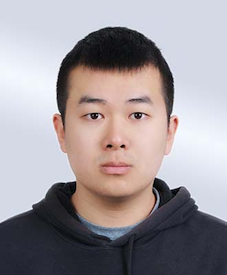
Zhicheng Geng
Deep Learning for Pattern Recognition in Seismic Reflection Data
The project, defended on April 19 2022, was supervised by Dr. Sergey Fomel with committee members including Drs. Luming Liang, Mrinal K Sen, Omar Ghattas, and Xinming Wu.
Abstract: Pattern recognition plays an important role in analyzing seismic reflection data, which contains valuable information of the subsurface geological structures, and serves as a powerful method for hydrocarbon exploration. Conventional seismic pattern recognition methods commonly involve handcrafted seismic attributes or filters that do not apply to seismic data with complex structures. On the other hand, with new seismic acquisition techniques and equipment providing an increasing amount of data, conventional methods tend to be inefficient in processing large-scale and high-dimensional datasets. Over the past decade, the improvement of computer powers and software development has promoted deep learning as an efficient and effective tool for pattern recognition, which extracts features directly from data without relying on assumptions. This dissertation presents deep learning methods for pattern recognition in seismic reflection data from various perspectives. First, I introduce a semi-supervised learning framework for salt segmentation to alleviate the burden of preparing a large amount of labeled training data. The unsupervised consistency loss enforces the convolutional neural network (CNN) to extract essential information from labeled and unlabeled data, leading to more accurate segmentation results and better generalization ability on different datasets than the supervised learning baseline. Second, I formulate relative geologic time (RGT) estimation as a regression problem and design a U-shape CNN to solve this problem. The encoder-decoder architecture with skip connections results in accurate RGT predictions directly from seismic images. Although trained on a synthetic dataset, the network generalizes well to complex field data. Third, I propose an unsupervised learning method for seismic random noise attenuation. In the proposed method, a convolutional autoencoder is trained to reconstruct clean images from noisy seismic images without supervision from labeled data. The network training is constrained by local orthogonalization loss for better signal and noise separation. Next, I apply CNNs to reconstruct subsurface velocity models from common-image gathers (CIGs), which involves depth-to-depth mapping. The focuses or the flatness of seismic events in CIGs contain valuable information about the surface velocity model. Trained with synthetic dataset migrated using wrong velocity models, the network learns the relationship between the incorrect positioning of seismic energy in CIGs and the corresponding correct velocity update. In the next chapter, I explore the possibility of employing a different network architecture, Transformers, for velocity model building. In the proposed method, velocity models are directly estimated from raw recorded seismic reflection data using a variant of Vision Transformers specially tailored for FWI (FWIT), consisting of an encoder and a decoder. The encoder of FWIT learns to extract high-level information from input shot gathers, which is further analyzed by the decoder to estimate the velocities based on the attention mechanism. The ability to learn long-dependency and the flexibility of predicting variable-length output make Transformers a more suitable architecture for FWI than CNNs. Finally, I discuss and suggest possible future research topics.
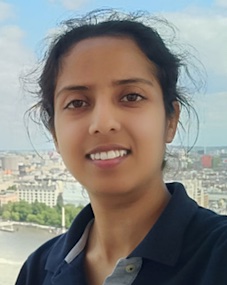
Harpreet Kaur
Improving Accuracy And Efficiency Of Seismic Data Analysis Using Deep Learning
The project, defended on April 12 2022, was supervised by Dr. Sergey Fomel with committee members including Drs. Raymond Abma, Mrinal K Sen, George Biros, and Kyle T Spikes.
Abstract: The ultimate goal of seismic data analysis is to retrieve high-resolution information about the subsurface structures. It comprises different steps such as data processing, model building, wave propagation, and imaging, etc. Increasing the resolution and fidelity of the different seismic data analysis tasks eventually leads to an improved understanding of fine-scale structural features. Conventional implementation of these techniques is computationally intensive and expensive, especially with large data sets. Recent advances in neural networks have provided an ability to produce a reasonable result to computationally intensive and time-consuming problems. Deep neural networks are capable of extracting complex nonlinear relationships among variables and have shown efficacy as compared to conventional statistical methods in different areas. A major bottleneck for seismic data analysis is the tradeoff between resolution and efficiency. I address some of these challenges by implementing neural network based frameworks. First, I implement a neural network based workflow for stable and efficient wave extrapolation. Conventionally, it is implemented by finite differences (FD), which have a low computational cost but for larger time-steps may suffer from dispersion artifacts and instabilities. On the other hand, recursive integral time extrapolation (RITE) methods, especially the low-rank extrapolation, which are mixed-domain space-wavenumber operators are designed to make time extrapolation stable and dispersion free in heterogeneous media for large time steps, even beyond the Nyquist limit. They have high spectral accuracy; however, they are expensive as compared to finite-difference extrapolation. The proposed framework overcomes the numerical dispersion of finite-difference wave extrapolation for larger time steps and provides stable and efficient wave extrapolation results equivalent to low-rank wave extrapolation at a significantly reduced cost. Second, I address wave-mode separation and wave-vector decomposition problem to separate a full elastic wavefield into different wavefields corresponding to their respective wave mode. Conventionally, wave mode separation in heterogeneous anisotropic media is done by solving the Christoffel equation in all phase directions for a given set of stiffness-tensor coefficients at each spatial location of the medium, which is a computationally expensive process. I circumvent the need to solve the Christoffel equation at each spatial location by implementing a deep neural network based framework. The proposed approach has high accuracy and efficiency for decoupling the elastic waves, which has been demonstrated using different models of increasing complexity. Third, I propose a hyper-parameter optimization (HPO) workflow for a deep learning framework to simulate boundary conditions for acoustic and elastic wave propagation. The conventional low-order implementation of ABCs and PMLs is challenging for strong anisotropic media. In the tilted transverse isotropic (TTI) case, instabilities may appear in layers with PMLs owing to exponentially increasing modes, which eventually degrades the reverse time migration output. The proposed approach is stable and simulates the effect of higher-order absorbing boundary conditions in strongly anisotropic media, especially TTI media, thus having a great potential for application in reverse time migration. Fourth, I implement a coherent noise attenuation framework, especially for ground-roll noise attenuation using deep learning. Accounting for non-stationary properties of seismic data and associated ground-roll noise, I create training labels using local-time frequency transform (LTF) and regularized non-stationary regression (RNR). The proposed approach automates the ground-roll attenuation process without requiring any manual input in picking the parameters for each shot gather other than in the training data. Lastly, I address the limitation of the iterative methods with conventional implementation for true amplitude imaging. I implement a workflow to correct migration amplitudes by estimating the inverse Hessian operator weights using a neural network based framework. To incorporate non-stationarity in the framework, I condition the input migrated image with different conditioners like the velocity model and source illumination. To correct for the remnant artifacts in the deep neural network (DNN) output, I perform iterative least-squares migration using neural network output as an initial model. The network output is close to the true model and therefore, with fewer iterations, a true-amplitude image with the improved resolution is obtained. The proposed method is robust in areas with poor illumination and can easily be generalized to more-complex cases such as viscoacoustic, elastic, and others. The proposed frameworks are numerically stable with high accuracy and efficiency and are, therefore, desirable for different seismic data analysis tasks. I use synthetic and field data examples of varying complexities in both 2D and 3D to test the practical application and accuracy of the proposed approaches.
 Kevin Meazell
Kevin Meazell
Deepwater Methane Hydrate Characterization in the Gulf of Mexico: Sedimentology and Stratigraphy
The project, defended in Fall 2021, was supervised by Dr. Peter Flemings with committee members including Drs. Jacob Covault, David Mohrig, and Lori Summa.
Abstract: Gas hydrate is found in cold, high-pressure, marine sediments around the world. Hydrate is important as a carbon sink, a natural geohazard, and a valuable economic resource. I use classic sedimentologic analyses, well log analysis, X-ray CT, seismic stratigraphy, pore pressure estimation, and basin modeling to elucidate the geologic conditions within highly-saturated, natural gas hydrate reservoirs in the deepwater northern Gulf of Mexico. I begin with the characterization of the channel-levee hydrate reservoir in GC-955 with grain size experiments, lithofacies mapping. Hydrate is found in thin-bedded layers of sandy silt that increase in net-to-gross and mean grainsize downhole. I use these results to interpret deposition of overbank sediment gravity flows from a deepwater bypass channel as it becomes increasingly confined by the levees it builds. Next, I use 3D seismic data to identify the relationship between similar channel-levee systems and venting seafloor gas mounds in the Terrebonne Basin of the Walker Ridge protraction area. I estimate the pore pressures, and show that below the hydrate phase boundary, free gas in the levees builds to a critical pressure and creates hydraulic fractures to the seafloor. I describe a conceptual model by which the venting process perturbs the hydrate stability zone, leading to further venting from shallower positions and the formation of distinct rows of gas mounds on the seafloor. Finally, I combine geomechanical properties of the GC-955 reservoir with the structure of the Terrebonne Basin system to show that the pressure estimates are well within reason. Together, these studies provide new insights into where hydrate is found, and how hydrate systems can both control and in turn be controlled by fluid flow, pressure, and stress in the deepwater environment.
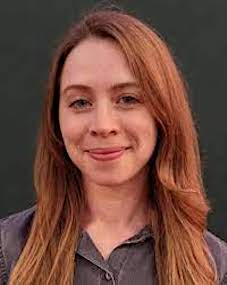
Alison Tune
Interactions between carbon cycling and bedrock weathering in a forest of the Northern California Coast Ranges
The project, defended in 2021, was co-supervised by Dr. Philip Bennett and Dr. Daniella Rempe and with committee members including Drs. Jennifer Druhan, Daniel Breecker, and Bayani Cardenas.
Abstract: The overarching objective of this dissertation is to better understand Earth’s carbon cycle by identifying linkages between plant mediated carbon cycling and bedrock weathering processes. Such processes have been extensively studied in soils to identify the magnitudes and dynamics of carbon sources and sinks. However, recent studies reveal the prevalence of root networks that extend beneath soils into bedrock that may also participate in these dynamics. The contribution of roots in bedrock to carbon cycling in the subsurface is presently poorly understood. To identify the processes operating in the deep root zone and their role in mineral weathering and carbon cycling, this dissertation uses specialized instrumentation installed within an actively weathering forested hillslope in the Northern California Coast Ranges. This dissertation documents carbon and water fluxes at high spatial and temporal resolution throughout a 16 m weathering profile underlying a mixed hardwood-conifer ecosystem. These measurements demonstrate that substantial rhizosphere-related respiration occurs in the deeper, bedrock root zone such that shallow, soil respiration dynamics are likely insufficient to capture subsurface carbon processes in forests characterized by rooting into bedrock. Carbon dioxide emission from the ground surface (also termed soil efflux) is typically thought to be controlled by microbial and plant activity in shallow soils, however, this dissertation reveals that the deeper bedrock contributes to these emissions and can account for up to 100% of the efflux during seasonal drought when soils are dry but roots continue to pull water from the deeper bedrock layers. The carbon dioxide produced in the deeper root zone dissolves in water and this water transits downward, acidifying deeper parts of the weathering profile and driving weathering reactions. The flux of reactivity delivered to the deeper weathering profile scales with the flux of water through the weathered bedrock, such that very little dissolved carbon dioxide is transported during drought years and instead remains in place in the root zone. Monitoring through an extreme drought period also revealed shifts in gas dynamics that reflect changes in the carbon source for respiration, indicating that plant water stress has implications for bedrock weathering. Carbon isotope measurements and laboratory incubation experiments reveal that modern, root-related processes are responsible for the observed carbon dynamics. The organic matter contained within the bedrock (termed petrogenic organic carbon) was shown to be oxidized within the root zone and lower unsaturated zone, with rates comparable to that in riverine systems. Rates of petrogenic organic carbon oxidation in the unsaturated zone may be important to climate over long time scales. The results of this dissertation research reveal that roots that penetrate bedrock fractures beneath soils play an important and sometimes dominant role in forest water and carbon cycling with implications for landscape evolution, water quality, and climate feedbacks.
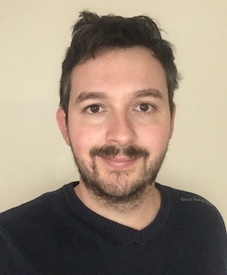
Paul Morris
Modeling the Architecture and Dynamic Connectivity of Deep-Water Channel Systems Using a Forward Stratigraphic Model
The project, defended on April 21 2022, was supervised by Dr. David Mohrig and Dr. Jacob Covault with committee members including Drs. Richard Sech, Zoltan Sylvester, and Timothy A Goudge
Abstract: Deep-water channels are important conduits of terrigenous material to continental margins, and they act as significant reservoirs of natural resources in the subsurface. This dissertation investigates the evolutionary development of deep-water channel systems and their deposits through use of a simple forward stratigraphic model and a seismic-reflection dataset. We apply our learnings to subsurface modeling to ascertain the impact of these architectures on dynamic connectivity. Firstly, we study a high-resolution 3D seismic-reflection dataset of a 25 km reach of the Joshua deep-water channel system in the eastern Gulf of Mexico. We document features analogous to meandering fluvial systems where an initial relatively straight channel underwent systematic bend expansion and downstream translation that resulted in a cutoff at one bend. Channel sinuosity continually increased throughout channel aggradation and correlates to a decrease in the average channel slope through time. We propose this may have promoted increasingly depositional turbidity currents and been a control on the system’s aggradation. We use a forward stratigraphic model where vertical channel movements are linked to a modified stream power law via channel slope and show how this honors trends in sinuosity, slope and aggradation observed in the Joshua. Next, we employ a forward stratigraphic model that honors our observations from the Joshua, comprising a meandering channel that migrates vertically through time (i.e., its trajectory). We find that three types of channel trajectory, when combined with realistic meandering processes, can capture common styles of deep-water stratigraphic architecture observed on the seafloor and subsurface. We document the overarching processes controlling the stratigraphic evolution of our channel-belt models and demonstrate how they provide dynamic, three-dimensional insights that can elude static cross-sectional perspectives, such as those observed in outcropping sedimentary rocks. Finally, we apply our learnings to models of the subsurface. Systematic channel migration and bend architectures are not typically captured in conventional modeling approaches. Using a simple well pair, we show how sweep behavior over production timescales can be controlled by bend-cutoff architectures. An increasing number of bend-cutoff architectures between a well pair typically increases the variability in potential flow path lengths, reflected in an increase in measures of dynamic heterogeneity. Though the models are entirely statically connected, it is the interaction of reservoir architecture and well geometry that controls sweep behavior over typical development timescales.
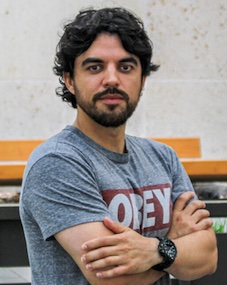
Sebastian Ramiro Ramirez
Integrated Stratigraphic and Petrophysical Analysis of the Wolfcamp at Delaware Basin, West Texas, USA
The project, defended on February 18 2022, was supervised by Dr. Peter Flemings with committee members including Drs. Nicola Tisato, Athma R Bhandari, Hugh C Daigle, and Charles Kerans.
Abstract: Hydrocarbons stored in low-permeability reservoirs, also known as ‘unconventional reservoirs’, represent important energy resources worldwide. Although current technology allows their production at economic rates, there still are numerous production challenges and unknowns regarding their flow behavior. A better understanding on how fluids stored in these reservoirs are drained by the hydraulic fractures after stimulation may help to optimize completion designs and field development plans. This research is an attempt to describe such drainage behavior in the largest oil producing unconventional formation in the World. I investigated the drainage behavior in Wolfcamp reservoirs at the completion scale by integrating stratigraphic and petrophysical analyses with flow modeling. I interpreted the depositional and diagenetic processes that generated three Wolfcamp cores recovered in the central-eastern Delaware Basin, measured the porosity and permeability of distinct lithofacies, and developed simple models to describe flow in these strata. I found that most fluids (~95% of the pore volume) are stored in low-permeability (e.g., < 60 nD) mudstones that I interpreted as hemipelagics and siliciclastics turbidites. Interbedded with these deposits are the low-porosity (~5% of the pore volume) and low-permeability (e.g., < 50 nD) carbonate lithofacies that I interpreted as gravity flow deposits and diagenetic dolomudstones. The carbonate gravity flow deposits, when dolomitized, are up to 2000 times more permeable than the other deposits and represent preferential flow pathways that drain fluids from the low-permeability strata during production. This drainage behavior increases the reservoir upscaled permeability, and therefore production rates, multiple times higher compared to a reservoir consisting of only low-permeability strata. Hence, the presence of these permeable, dolomitized, gravity flow deposits plays a critical role when producing from Wolfcamp reservoirs as they accelerate drainage. These findings are also applicable to other low-permeability formations exhibiting significant permeability heterogeneity.

Grace Beaudoin
The Behavior of Halogens (F, Cl, Br, I) in Altered Oceanic Crust during Prograde Subduction Zone Metamorphism and Devolatilization
The project, defended on April 18 2022, was supervised by Dr. Jaime Barnes with committee members including Drs. Sarah Penniston-Dorland, Daniel Stockli, John C Lassiter, and Timm John
Abstract: THalogens (F, Cl, Br, I) are volatile elements enriched in Earth’s surface reservoirs. Following seafloor alteration and tectonic convergence, halogens are carried into subduction zones. Prograde metamorphism of altered ocean crust (AOC) results in hydrous mineral breakdown and the release of volatiles. Halogen devolatilization is not well constrained, particularly for Br and I. To explore the halogens fluxes and behaviors during subduction of AOC, this study investigates bulk rock concentrations from seafloor AOC drill cores (n=21) and paleo-subduction settings that expose exhumed metamorphic rocks (n=44) that record the chemical evolution of AOC during prograde metamorphism. Chapter 2 juxtaposes eclogitic and AOC samples to gauge broadscale changes to the halogen budget between the trench and the depths of ~80 km. Chapter 3 focuses on a suite of petrogenetically-related meta-ophiolites from the Western Alps that record progressive metamorphism and shed light on halogen loss across metamorphic grade, especially at low P-T conditions. To study how halogens partition during phase breakdown and fluid transport, Chapter 4 examines a ~1 m transect of eclogitic samples that preserve evidence of high pressure vein formation and fluid-rock interactions. Findings from this work reveal that halogens are not evenly distributed in AOC. Basalts are F-rich and gabbros are Cl- and Br-rich. During subduction, F is decoupled from the heavy halogens (Cl, Br, I) displaying compatibility and immobility. Chlorine and Br are closely coupled; they preferentially partition into fluid phases and are efficiently removed from the mafic slab. Iodine behaviors are more cryptic, with many high-P samples preserving protolith-level abundances. Halogen mobility in devolatilizing AOC is as follows: Cl ≈ Br > I ≫ F. New flux estimates find that ≤40% of initial F and I and ~70% of initial Cl and Br is removed from subducting AOC prior to depths of arc magma genesis, with much of this loss occurring early in the forearc, before the transition to blueschist assemblages. Fluorine is broadly distributed among phases. The heavy halogen inventory is not controlled by a dominant phase (i.e., amphibole). Rather, these elements are distributed at low concentrations among many phases or are predominantly hosted in non-lattice sites.
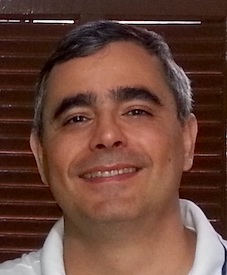
Ricardo De Braganca
Enhancing Full Waveform Inversion with Machine Learning Optimizers
The project, defended on July 1 2022, was supervised by Dr. Mrinal Sen with committee members including Drs. Nicola Tisato, Stephen P Grand, Zeyu Zhao, and Kyle T Spikes.
Abstract: To be added

Yuquian (Philomena) Gan
Shelf-Slope Sediment Transport in Medium-Sized Basin Margin Clinoforms , with a Focus on Slope Channel Facies and Architecture
The project, defended on April 15 2022, was supervised by Dr. Cornel Olariu and Dr. Ron Steel with committee members including Drs. Cristian Carvajal, Brian K Horton, and David Mohrig
Abstract: Once sediment is brought beyond the shelf-edge, its transport into deep water is dominated by sediment gravity flows passing through slope channels and canyons, as well as from finer grained overbanking systems diverted out of these conduits onto the generally muddy slope. Channels and channel complexes are well studied at the scale of continental-slope clinoforms, albeit often at relatively low resolution. This thesis focus on the facies and architecture of slope-channel fills within medium-sized clinoforms (height < 1km) that were supply-dominated (low-angle progradting shelf edge trajectory). The main study database is a set of well exposed, ‘walkable’ clinoforms in the Early Jurassic, back-arc Neuquén Basin of Argentina. Key results from this work are that (1) upper slope channels have a tendency to be deeper than the lower slope channels within the same clinoform set, (2) a downslope fining of slope channel fill from conglomerate to sandstone, with conglomeratic debris flows accumulated preferentially in upper slope channels, whereas lower slope channels mostly host sand-rich turbidites, except for the cases of coarse sediment (pebble) bypass to lower slope and basin floor (3) individual channel-element infills (especially within upper slope channel complexes) are strikingly dominated by sharp-based, decimeter thick, sediment gravity flow units that internally show an upward change from conglomeratic to sand-rich beds. Clast sizes decrease upwards and sandy matrix percent increases upwards through each infill unit, as debrite beds change upward to sandy turbidites. We found that this prominent multi-flow, fining-upward sequence is especially common on upper slope sites and was possibly related to a eustacy-regulated decreasing sediment supply from the nearby shelf into the slope channels. This tentative explanation uses the landward-stepping action of a transgressive shoreline to explain the decimeter scale upward-fining architecture. The coarse sediment is initially brought to the shelf edge and slope by shoreline regression but sediment flux to the channels then reduced during drowning of the shelf. Autogenic explanations for the channel architecture are also possible, but the very prominent repetition of 10-20m thick regressive-to-transgressive cycles (kms lateral extent) in the adjacent shoreline-shelf stratigraphy make the allogenic drive hypothesis feasible. The slope portion of the Maastrichtian Lewis-Fox Hill clinoforms in Washakie Basin is used as a second case study for analysis of similar, medium-sized, supply-dominated clinoforms, with overall finer grains (sandstone dominant). Sandstone thickness from the slope section is extracted from closely spaced well log data to approximate slope channel thickness. In this case, the impact on channel architecture made by differential lateral subsidence across the basin and of lowering of the shelf-edge trajectory during clinoform growth was a focus of the analysis. Results suggest that (1) channels commonly reduced in thickness from upper to lower-slope sites, (2) more rapid subsidence across the same clinoform set increased the numbers of channels but the channels became relatively small and (3) flattening of the shelf-edge trajectory (from progradation-dominant to aggradation-dominant) caused more deeply downcut channels, (4) greater degree of progradation of the shelf edge is linked with deeper slope channels, explained by greater amount of sediment being ‘forced’ into deep water with a more limiting accommodation on the shelf.
 Benjamin Rendall
Benjamin Rendall
Regional and Global Controls on Carbonate Factory Composition and Stratigraphic Architecture During Global Icehouse: Examples from the Pennsylvanian, New Mexico and the Pleistocene, Bahamas
The project, defended on April 14, 2022, was supervised by Dr. Charles Kerans with committee members including Drs. Steven L. Bachtel, Brian K Horton, David Mohrig and Xavier Janson
Abstract: To be added

Colin Schroeder
In-Situ Visualization and Characterization of Mud-Filtrate Invasion and Filter Cake Deposition Using Time-Lapse X-Ray Micro-Computed Tomography (Micro-CT)
The project, defended on April 15 2022, was supervised by Dr. Charles Kerans with committee members including Drs. Nicola Tisato and Robert G Loucks
Abstract: Borehole measurements acquired during and shortly after drilling of oil and natural gas wells are often subject to uncertainty resulting from the effects of mud-filtrate invasion. Accurate interpretation of these measurements requires a thorough understanding of the invasion process, including the deposition of filter cake, or mudcake, on the borehole wall and the flow of mud filtrate around the wellbore. Failure to properly account for these effects can lead to inaccurate estimation of petrophysical properties, errors in the quantification of hydrocarbon reserves, and misinformed long-term investment decisions. In this work, we designed and performed novel laboratory experiments that involved water- and synthetic oil-based mud-filtrate invasion in cylindrical rock core samples of varying petrophysical properties. Using high-resolution X-ray micro-computed tomography (micro-CT), we were able to visualize and characterize mudcake deposited on the borehole wall and the distribution of mud filtrate in the core samples as a function of both space and time during the experiments. Additionally, with the aid of a new set of generalized filtration equations, we were able to reliably estimate average in-situ mudcake properties, including mudcake porosity and permeability, during the experiments. Experiments were performed to study the influence of drilling fluid properties and rock petrophysical properties on the process of mud-filtrate invasion. Results for the rate of mud-filtrate invasion and the time evolution of mudcake thickness were consistent with behavior predicted by the derived generalized filtration equations. For rock core samples with permeability exceeding 8.9 mD, aside from a brief initial period of spurt loss, the mud-filtrate invasion rate was primarily controlled by the properties of the deposited mudcake rather than the distinct petrophysical properties of the core samples. In-situ mudcake properties, including porosity and permeability, generally remained constant while mudcake was thin, justifying the use of average in-situ values with models derived assuming incompressible mudcake. Filtrate flow through the core samples, including the movement of the invasion front and the redistribution of mud filtrate within the invaded zone, was strongly influenced by capillary forces, which caused deeper, more-uniform invasion than would be expected in the absence of capillary-driven flow, both in homogeneous and spatially heterogeneous rocks.

Justin Thompson
Exploring Groundwater Recoverability
The project, defended in Fall 2021, was supervised by Dr. Michael Young with committee members including Drs. [Jay Banner, Shelia Olmstead, and Daniella Rempe.
BEG news item
Abstract: Where the depth of groundwater increases, recoverability—the relative ease of pumping—decreases. Understanding how recoverability changes with planned or unplanned changes in depth-to-water is a critical issue for groundwater managers, policymakers, and stakeholders. However, recoverability is generally not well understood, poorly quantified, and detached from local-level groundwater planning and management where decisions are often based on depth-to-water over time. Currently, Texas’ best estimates of recoverability are derived from arbitrary storage volume constraints, rendering unknown the impacts of variable storage and use conditions, or management decisions. Using hydrogeologic and economic constraints to better calculate recoverability, the topic of this dissertation, could provide a more comprehensive approach for long-term water planning. New modeling methods for quantifying recoverability are developed to capture the complex relationship among aquifer storage conditions, well infrastructure, and recoverability by connecting groundwater drawdown solutions with comprehensive cost components (drilling, equipment, and lifting energy). Partially penetrating well effects, which have direct ramifications for both the capacity and economic elements of recoverability, are used to create a novel approach for optimizing well infrastructure that maximizes long-term recoverable yields. In this way, the model has the flexibility to quantify recoverability for deterministic (user specified or existing) well infrastructure or to explore the limits of recoverability with yield-optimized infrastructure. Single well model results reveal that groundwater stored in shallow and unconfined conditions is highly recoverable; physical constraints are more likely than economic considerations to bind yields. Alternatively, recoverability of groundwater stored in deep and confined conditions is more likely bound by economic constraints than physical limitations; yields may be restricted where the cost of dewatering saturated thickness is prohibitively expensive. Yield-optimized infrastructure is then integrated with spatially distributed aquifer data to model maximum recoverable yields for the Carrizo-Wilcox Aquifer in Texas at an initial depth-to-water and a planned change in depth-to-water in order to assess how yields differ between the two. Results show that the capacity constraints upon regionally recoverable yields correlate strongly with aquifer saturated thickness, economic limitations correlate strongly with aquifer depth, and recoverable yields in shallow and unconfined settings are highly sensitive to changes in depth-to-water. Using a unique approach, recoverability solutions developed here are then linked with three disparate data sets providing aquifer characteristics, existing well infrastructure, and user attributes to quantify the socioeconomic impact to existing users (domestic, livestock, and irrigation) of a planned change in depth-to-water. Important disparities are illuminated by specifying the types of these impacts and allocating them to specific user groups. For example, 84% of study area wells designated for domestic use bear only 58% of the total modeled increase in regional pumping costs, while 5% of study area wells designated for irrigation use bear 19% of these costs. Additionally, while affordability of domestic water supply for the majority of the study area population is unimpeded by the planned change in depth-to-water, results suggest that low-income communities may be disproportionately impacted. Finally, results indicate that the distribution of the types of costs (drilling, equipment, and lifting energy) present at initial groundwater production do not necessarily correspond to the socioeconomic impacts of a planned change in depth-to-water. While drilling costs are found to compose 83% of all study area pumping costs at initial production, 56% of the increase in future pumping costs are driven by lifting energy costs. Thus, policy interventions designed to mitigate these impacts are more likely to meet their objectives if they apply these or similar methods, rather than rely on initial production costs.
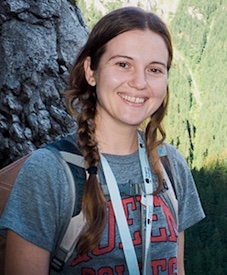
Anna Turetcaia
Aerobic Metabolism of Organic Matter across the Terrestrial-Aquatic Interface through the Lens of Flume Experiments and Models
The project, defended on May 13 2022, was supervised by Dr. Bayani Cardenas with committee members including Drs. Adam Kessler, Daniel O Breecker, Philip C Bennett, and Matthew H. Kaufman
Abstract: To be added
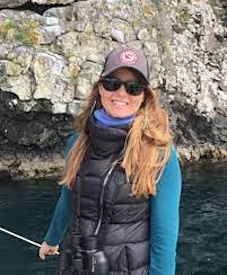
Kathleen Wilson
The Quaternary Sedimentology, Geomorphology, and Sediment Transport Mechanisms in The Bahamas and Turks and Caicos Islands
The project, defended on April 22 2022, was supervised by Dr. David Mohrig with committee members including Drs. Travis Swanson, Timothy A Goudge, and Charles Kerans.
Abstract: To be added

Eirini Poulaki
Petrochronological and Structural Reconstruction of the Life Cycle of Mediterranean-Style Subduction Zones
The project, defended on July 15, 2022, was supervised by Dr. Daniel Stockli with committee members including Drs. Andrew Smye, Mark P Cloos, Claudio Faccenna, and Jaime D Barnes.
.
Abstract: To be added

Cullen David Kortyna
Tectonic Controls on Sediment Generation and Transfer from the Southwestern USA Laramide Hinterland to the Northwestern Gulf of Mexico
The project, defended on July 20, 2022, was supervised by Dr. Daniel Stockli and Dr. Jacob Covault with committee members including Brian K Horton, Timothy F Lawton, and David Mohrig.
Abstract: To be added

Xinggang Christopher Liu
Coupling between Sedimentation and Salt Deformation
The project, defended on July 20, 2022, was supervised by Dr. David Mohrig with committee members including Drs. Timothy A Goudge, Tim P Dooley, Jacob A Covault, Michael R Hudec, and James L Buttles.
Abstract: TMy dissertation focuses on how sediment-transporting flows (e.g., turbidity currents) couple with deformation of earth materials (e.g., rock salt) to produce a morphodynamic system responsible for generating submarine landscapes and particularly minibasins. Turbidity-current sediments deposited on top of salt layers can drive salt flow by applying differential loads. The flow of salt substratum can produce different styles of surface topography, modifying the sediment dispersal systems that fuel the continental margin sedimentation. These linked systems consist of many nonlinearly interacting elements so that their evolutions cannot easily be predicted. In order to better understand this emergent complexity. I designed experiments to allowed turbidity currents, their deposits, and the structural deformation associated with substratum flow to freely coevolve in three dimensions. These experiments were specifically designed to capture the full morphodynamic behavior of submarine systems possessing a mobile substratum. First, I investigated the role of original salt thickness in controlling patterns of subsidence/uplift and sedimentation. Two experiments with different substrate thickness were perturbed by similar loads and pressure-gradients tied to turbidity-current sedimentation. Over thick salt, turbidite loading drove salt flow that formed a classic minibasin. Basin subsidence/uplift were accurately estimated using only turbidite thickness and the principle of isostasy. Sediment trapping efficiency increased as relief of the minibasin grew. In contrast, turbidite loading over thin salt was never isostatically compensated and formed a deposit with positive topography that was segmented by faults. Increasing displacements on these faults produced horsts and grabens that grew over time. Predicting this pattern of salt deformation required using not only local turbidite thickness, but also the gradient and curvature in turbidite thickness, both of which were found to exhort increasing control on salt deformation as the buried salt layer thinned. Second, I investigated how different styles of structural deformation influenced subsequent patterns of sedimentation and then future patterns of subsidence. In the thin-salt case, growth of a reactive diapir and continuous segmentation of the turbidite cover led to development of a network of structural channels that laterally confined flows, guiding basinward transport by subsequent currents. Over thick salt, the continuous subsidence of produced a minibasin that increased in relief with each sedimentation event. Eventually the walls became steep enough to fail and removal of this sediment induced salt breaching. Coalescence of two salt sheets fully encased the minibasin and formed a structural channel along its suture. This structural channel facilitated the bypassing of sediments to a downdip region where a second minibasin began to form. Both styles of structural deformation formed ‘structural’ channel(s) that laterally confined the turbidity currents, increasing the sediment bypassing fraction, extending the field of deformation, and producing new salt-influenced topography at a basinward position. Third, I investigated the effect of spatially varying salt thickness on morphodynamic evolution of submarine basins. In the laboratory, two experiments with different base-salt configurations were designed to isolate the control of variable salt thickness on basin evolution. The first experiment was conducted over a uniform salt layer and the second experiment had a step in salt thickness. Salt flow in both cases was solely driven by turbidity-current sedimentation with the same initial conditions. A simple step in salt thickness generated multiple minibasins with migrating depo-centers that changed depositional patterns over time. The structural and stratigraphic complexity that emerged exhibited properties that are commonly ascribed to gravity gliding over a regionally tilted basement and point out a potential difficulty in separating the signatures of regional structural deformation from internally generated signals. The feedbacks between sedimentation, substratum flow, and evolving topography need to be considered at all times if accurate reconstructions of basin evolution are to be achieved. In sum, my experimental designs incorporated a necessary amount of complexity that produced geologically realistic structural and stratigraphic geometries and captured the dynamic processes governing pattern formation in time and space. My results demonstrate how salt-sedimentation interactions can generate a wide range of structures in absence of regional salt tectonics, requiring only the internal dynamics that define the morphodynamic evolution of submarine basins in salt provinces.

Megan Flansburg
Temporal Differentiation of Polyphase Ductile Fabrics in Metamorphic Core Complexes by Structurally Integrated U-PB and (U-TH)/HE Dating (Southern Cyclades, Greece and Southern Basin and Range, U.S.A.)
The project, defended on July 20, 2022, was supervised by Dr. Daniel Stockli with committee members including Drs. Michael Wells, Richard A Ketcham, Sharon Mosher, and John Singleton.
Abstract: To be added
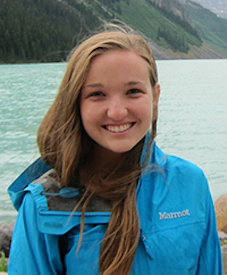
Catherine Ross
Impact Crater Geo- and Thermo-Chronolocy and K-PG Boundary Deposit Provenance
The project, defended on July 22, 2022, was supervised by Dr. Daniel Stockli and Dr. Sean Gulick with committee members including Drs. Natalia Artemieva, Christopher S Lowery, David Mohrig, and Timmons Erickson.
.Abstract: To be added
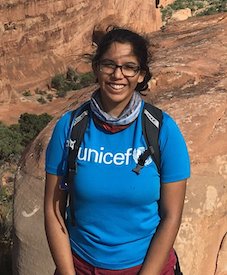
Kiara Gomez
Jurassic Redox Conditions in the North Sea
The project, defended on July 22, 2022, was supervised by Dr. Charles Kerans and Dr. Lorena Moscardelli with committee members including Drs. Swapan Sahoo, Daniel O Breecker and Toti E Larso.
.
Abstract: To be added

Keith Minor
To be added
The project, defended in July 2022, was supervised by Dr. XX with committee members including Drs. [to be added].
Abstract: To be added
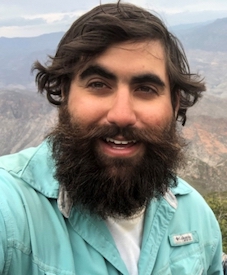
Abdulah Eljalafi
Anatomy of Isolated Carbonate Platforms of the Western Gulf of Mexico
The project, defended on July 15, 2022, was supervised by Dr. Charles Kerans with committee members including Drs. Fernando Nunez-Useche, Rowan C. Martindale, Robert Scott, and Xavier Janson.
Abstract: Shallow-water carbonate platforms are ecosystems sensitive to changes in the ocean-atmosphere dynamics. Their stratal architecture, dominant biota, and vertical and lateral facies distributions are largely controlled by eustatic sea-level fluctuations, evolutionary state of biota, and climatic and oceanographic conditions. During the mid-Cretaceous (Aptian-Cenomanian) of the western Gulf of Mexico, a series of isolated and land-attached platforms developed on topographically high basement structures and continental shelves, hosting diverse marine ecosystems for over 30 million years. Their ultimate demise coincided with a series of extreme episodes of global environmental change, widespread ocean anoxia, and elevated CO₂ levels in the mid-Cretaceous. Considerable research efforts have been directed to understand the temporal architectural arrangements of facies and construct sequence-stratigraphic frameworks for the largest platforms in the western Gulf of Mexico region (i.e., Texas, Comanche, and northern Mexico-Coahuila). In contrast, small isolated platforms in central Mexico have received much less attention, despite their potential to provide a more complete picture of the regional palaeoceanographic and paleoclimatic conditions. This field-based study explores one of these isolated carbonate platforms in central Mexico, the El Doctor platform, investigating the eustatic and oceanographic conditions that governed its development. This dissertation establishes a shelf-to-basin depositional framework that serves as a type-locality for Cretaceous isolated carbonate platforms of the Western Gulf of Mexico. The study assesses depositional environments on the shelf, slope, and basin linked to a sequence stratigraphic framework tied to other regional and global time-equivalent carbonate platforms. Three composite sequences are presented in this study, which record platform-wide morphological evolution followed by progressive drowning and carbonate factory shutdown near the Albian-Cenomanian boundary coinciding with the onset of Ocean Anoxic Event 1d. The resulting stratigraphic framework sheds new light on the spatiotemporal variability in platform and slope development and demise, highlighting asynchronicity and regionally variable responses to global oceanographic and eustatic drivers around the Gulf of Mexico basin and greater Tethys realm.
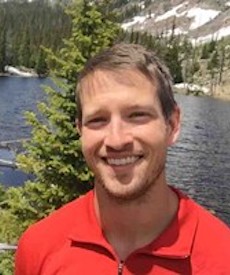
Buddy Price
Controls on Mixed Carbonate-Siliciclastic Slope and Basinal Depositional Architecture
The project, defended in Spring 2022, was supervised by Dr. Charles Kerans and Dr. Xavier Jansen with committee members including Drs. David Mohrig, Jacob Covault, and Gregor P. Eberli.
Abstract: Deepwater carbonate depositional systems represent historically understudied environments. The Permian Basin provides an advantageous location to re-evaluate these settings due to subsurface data density as well as existing outcrop and subsurface studies providing a framework on which to expand. Regional well log mapping coupled with cores and seismic data highlight a range of carbonate accumulations along the slopes and in the deeper basin indicating a need for updates to current Permian Basin basinal depositional models. Thickness maps and cross sections highlight multiple mounded and elongate carbonate-mud rich accumulations along the western slopes of the Delaware Basin. The mounded nature, lack of platform focused sourcing, and presence of oblique cross-cutting channels suggest these features represent carbonate contourite drifts as opposed to gravity-driven deposits. The drifts extend from the slopes at specific locations corresponding to bathymetric irregularities that likely locally weakened currents, causing deposition. Drift accumulations significantly alter slope geometries but present only one control on slope variation. Additionally, underlying carbonate buildups generates antecedent topography and drives differential compaction which influences platform to basin relief, subsequent slope gradients, and progradation-aggradation ratios. Bottom currents may also locally sweep sediments from toe-of-slope environments, inhibiting progradation. In the deeper basin, mapping highlights previously undocumented calciclastic submarine fans. The fans appear to be point sourced from the platform by antecedent topography, slope reentrants, and regional faults. Some fans extend into the basin over 100km and reach 250m in thickness. The fans range in composition, containing both carbonate debrites and turbidites, and varying volumes of mud-rich siliciclastic turbidites. Runout of gravity flows resulted in concentration of comparatively coarser carbonate material in proximal fan environments and finer siliciclastic mudstone, siltstone, and organic matter in fan fringe environments. This work highlights the first recognition of a carbonate drift system and the expanded interpretation of large-scale calciclastic submarine fans in the Permian Basin. As the Permian Basin represents one of the most heavily studied and geologic data-rich areas in the world, new interpretations of carbonate drift systems and calciclastic submarine fans indicate these systems are likely more common and overlooked in the ancient rock record.
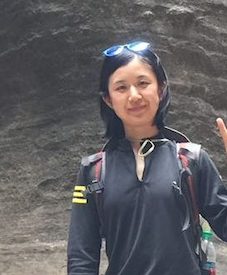
Wei Xie
Reservoir Facies Optimization Using Human-Guided Machine Learning and Probabilistic Rock-Physics Templates
The project, defended in Spring 2022, was supervised by Dr. Kyle Spikes with committee members including Drs. Mrinal Sen, Nicola Tisato, Sean Gulick and Zoltan Sylvester.
Abstract: Reservoir facies are rock units that show distinctive features of rock types and fluid-flow properties. The characterization of reservoir facies helps us better understand the lifetime performance of reservoir. However, this process is complicated and challenging because we need to consider information from different sources with a wide range of scales (e.g., lab scale, well-log scale and seismic scale). This dissertation aims to characterize reservoir facies by integrating domain knowledge with statistical and machine learning techniques. To achieve this goal, I first present an active semi-supervised technique to classify well-log facies. This method integrates knowledge from domain experts and the data characteristics of wireline logs. It does not rely on training models or predefined classifiers. Instead, it utilizes small amounts of instructions from domain experts to guide facies clustering. The application on North Sea deep-water dataset illustrated that the semi-supervised approach could classify reservoir facies based on the data characteristics and simultaneously comply with the physical interpretations. In the second part of this dissertation, I developed a workflow using probabilistic rock-physics templates to determine the optimal reservoir facies models. Domain knowledge was imposed to build facies models with different pore-fluid parameters, and quantitative evaluations were performed to determine the optimal models. This workflow considers various types and magnitudes of errors from the petro-elastic, elastic and seismic domains. Use of Gassman equation and probabilistic rock-physics templates can mimic possible fluid types and different errors from the rock-physic modeling and well-log data. The Backus average accounts for resolution inconsistency from well-log to seismic scales. The low-frequency model building considers the possible misinterpretations of initial models in seismic inversion. I applied this workflow onto a dataset acquired in the Gulf of Mexico. Comparisons of different evaluation metrics suggested that scenario with five facies was the best facies model. Using the optimal facies models, I mapped the reservoir facies with different low-frequency models and determined areas with consistent estimations. This workflow outputs valuable information on the number and parameter distribution of facies models. It provides important guidelines for reservoir facies modeling when limited data are provided.
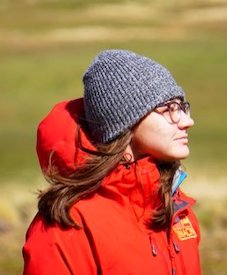
Sarah Davis
New Insights into Avian Evolution: Evidence from Fossils and Colorful Phenotypes
The project, defended in Summer 2022, was supervised by Dr. Julia Clarke with committee members including Drs. Christopher Bell, Brian Horton, Rowan Martindale, and Michael Ryan.
Abstract: Birds (Aves) are the most species-rich terrestrial vertebrate group alive today, with a deep evolutionary history extending back to the Cretaceous and surviving through the Cretaceous-Paleogene (K/Pg) mass extinction event. To best understand the evolution of this group, a combination of insights from fossils and living taxa are needed. Studies of extant taxa provide information on how living systems function, which is necessary to continue improving deep-time evolutionary hypotheses, allowing for more accurate interpretations of the fossil record. It can be especially important to study traits such as coloration to inform targeted approaches to new methods or to constraint reconstructions of extinct animals. My research expands our understanding of avian evolution by investigating the carotenoid coloration system within living birds to better elucidate how distribution of this pigment type has evolved across tissue types within Dinosauria. Ancestral state reconstructions indicate that carotenoid-consistent color expression was possible in bare-part tissues of extinct archosaurs including dinosaurs, with likelihood increasing within Aves. Expression of carotenoids in more tissue types and regions is also associated with increased dietary carotenoid content, indicating that extinct archosaurs with certain diets would have been more likely to express these colors. In addition to phenotypic data from living birds, more fossils from age-constrained localities are needed to better understand bird evolution. The fossil record from the latest Cretaceous extinction interval to early Paleogene is still limited, and most discoveries are from the Northern Hemisphere. New localities in Chilean Patagonia and the Antarctic Peninsula have produced new avian fossils, as well as fossils of other theropods, that expand our understanding of diversity from a critical time interval. New Chilean fossils provide the southernmost record of enantiornithine birds, as well as crucial new datapoints for the presence of ornithurines during the Maastrichtian. Fossils from Seymour Island, Antarctic, add to the known diversity of Sphenisciformes during the Eocene, while also confirming previously controversial records of Gruiformes and Xenarthran mammals from this period in Antarctica. While these new fossils are an important piece of the story, they are still limited in the amount of information they provide. Altogether, this research expands our understanding of species from Southern Hemisphere localities and shows the importance of taking a truly global approach to investigating mass extinction events. Furthermore, I highlight the need for more broad-scale consideration for phenotypic traits in living groups to understand how phenotypic variation evolves in deep time.

Grace Musser
Resolving the evolutionary radiation and phenotypic evolution of basal Neoaves: Total evidence phylogenetics and macroevolutionary patterns in core-Gruiformes (rails, cranes and allies)
The project, defended in Spring 2022, was supervised by Dr. Julia Clarke with committee members including Drs. TBD.
Abstract:
Compiled by Kristin Phillips, Department of Geological Sciences